
Review on 🖨️ Gizmo Dorks Polycarbonate Filament Printers: Enhancing Additive Manufacturing 3D Printing Supplies by Jason Paredes

Polycarbonate prints well if you use the right settings
This material looks good. This is what it says, a polycarbonate filament designed for use in 3mm (2.85mm actual OD) FDM printer extruders. In this review, I assume that you have a working knowledge of 3D printers. So far it hasn't blocked my printer. or I had trouble feeding through my Bowden tube. What is not clear from the descriptions or anything is why you might need this material as polycarbonate (PC) is not the easiest material to print. The great thing about PC is that it's extremely strong, very stiff, impact resistant AND (which sets it apart from all other FDM plastics of this strength) can be easily solvent welded to make strong multi-piece parts (which is why I want to use it over nylon ). I also didn't smell any smoke while typing (I'm not saying it doesn't give off fumes, it's just that I can't smell them and I have a good nose). What is NOT nice about the PC is that it absorbs water. from the atmosphere, like a sponge, a well-known irritant property. When you melt PC that has been exposed to moisture, large bubbles form in it, from which water evaporates. Not good. The PC is presumably dry from the supplier (it comes vacuum packed with a desiccant) but you still need to find a way to remove the water from the filament as you won't be able to fully use it until it's absorbed. Water. Noticeable water absorption occurs in just a few hours. I store my filament in an Excalibur 68 C dehydrator, which is also where I store nylon. Works perfectly. The PC must also print at very high temperatures - 265°C is recommended. The problem is that many printers (including my Ultimaker 2) only heat up to 260°C to prevent the teflon parts in the extruder head from collapsing. Spring. You can print on a PC at 260C, but you have to work pretty slowly - I'm using 30mm/s at 0.2mm layer height (I'm looking for strength, not looks). Let the PC stick to the print platform and the prints want to warp a little. There are two issues with gluing: 1. substrates and 2. heated beds (as far as I can tell you need a heated bed to print this material). I've tried printing direct to glass, to glass with glue, to glass with PVA, to glass with PC juice (PC dissolved in weld 4), to kapton tape, and to kapton tape with PC. No love. The only interface I've had any luck with is BuildTak. BuildTak is a reusable resin sheet with removable adhesive that you attach directly to the glass build platform. You can get it at Revain for not too much money. The recommended bed temperature is around 125°C. My standard Ultimaker 2 maxes out at 116 degrees Celsius, which isn't really good enough. I set the print to start at 116C bed temp, wait for the print to start, then go to setup and increase the bed temp to 125C and coat the entire printer with Glad Force Flex Extra Strong 30 Gallon. a large black garbage bag (use whatever you want, I know one will do). This allows it to heat up to 125°C, keeps everything hot and I think it prevents water from getting into the filament during printing. Using these methods I've printed parts with flat round bases of 220mm diameter without warping. sorry this is so long Hope that helps. My settings: Standard Ultimaker 20.4mm nozzle 0.2mm layer height 0.8mm body thickness 0.6mm bottom/top layer thickness 30mm/s print speed 0.3mm start layer thickness 220mm/s travel speed 20mm/ s lower layer fan speed disabled 260 ° C printing temperature 116 ° C initial layer temperature rose to 125 ° C immediately after the start and packed the machine BuildTak coated printing bed extrusion rate 110%
- Heated bed printing
- Unbelievable price
New products
Comments (0)
Top products in 🖨️ 3D Printing Supplies
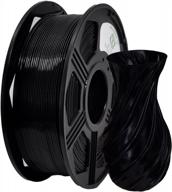
YOYI 3D Printer Filament - PETG 1.75Mm 2.2Lbs(1Kg) Spool, High Accuracy +/- 0.03 Mm, 100% New Raw Material!

32 Review
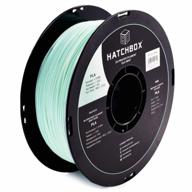
HATCHBOX 1.75 Mm Mint PLA 3D Printer Filament, Dimensional Accuracy +/- 0.03Mm, 1 Kg Spool

35 Review
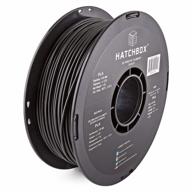
Premium Quality Black HATCHBOX PLA 3D Printer Filament With High Dimensional Accuracy - 1 Kg Spool, 3.00 Mm

37 Review
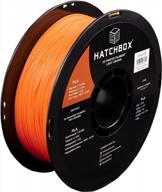
High-Quality 1.75Mm Light Orange PLA 3D Printer Filament By HATCHBOX - 1 KG Spool With +/- 0.03 Mm Dimensional Accuracy For Exceptional 3D Printing Filament Results

25 Review
Another interesting products

🖨️ ANYCUBIC Assembled Innovation Off Line Printing: Streamline Your Printing Process with Cutting-Edge Technology

5 Review

🖨️ IFUN 3D Printing Liquid Resin: High-Quality Innovative Solution

5 Review

🖨️ FLASHFORGE Adventurer: Enhanced 3D Printer with Removable Extruders and Monitoring Features

4 Review
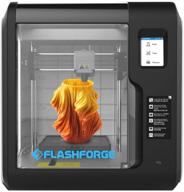
Flashforge Adventurer 3D Printer with Detachable Precision Leveling System

6 Review

